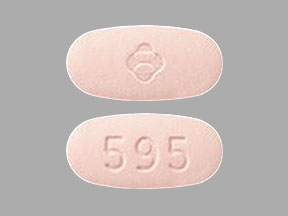Generic Prevymis Availability
Last updated on Apr 10, 2025.
Prevymis is a brand name of letermovir, approved by the FDA in the following formulation(s):
PREVYMIS (letermovir - pellets;oral)
PREVYMIS (letermovir - solution;intravenous)
-
Manufacturer: MERCK SHARP DOHME
Approval date: November 8, 2017
Strength(s): 240MG/12ML (20MG/ML) [RLD], 480MG/24ML (20MG/ML) [RLD]
PREVYMIS (letermovir - tablet;oral)
-
Manufacturer: MERCK SHARP DOHME
Approval date: November 8, 2017
Strength(s): 240MG [RLD], 480MG [RLD]
Is there a generic version of Prevymis available?
No. There is currently no therapeutically equivalent version of Prevymis available in the United States.
Note: Fraudulent online pharmacies may attempt to sell an illegal generic version of Prevymis. These medications may be counterfeit and potentially unsafe. If you purchase medications online, be sure you are buying from a reputable and valid online pharmacy. Ask your health care provider for advice if you are unsure about the online purchase of any medication.
See also: Generic Drug FAQ.
Related patents
Patents are granted by the U.S. Patent and Trademark Office at any time during a drug's development and may include a wide range of claims.
-
Pharmaceutical composition containing an antivirally active dihydroquinazoline derivative
Patent 10,603,384
Issued: March 31, 2020
Inventor(s): Paulus Kerstin & Schwab Wilfried & Grunder Dominique & Van Hoogevest Peter
Assignee(s): AICURIS GMBH & CO. KGThe invention relates to pharmaceutical compositions, particularly for intravenous administration, containing {8-fluoro-2-[4-(3-methoxyphenyl)piperazine-1-yl]-3-[2-methoxy-5-(trifluoromethyl)phenyl]-3,4-dihydroquinazoline-4-yl}acetic acid in combination with at least one of the cyclodextrin excipients, lysine and arginine; the method for its production; and its use in methods of treatment of and/or as a prophylactic for illnesses, particularly its use as an antiviral, preferably against cytomegaloviruses.
Patent expiration dates:
- February 28, 2033✓
- February 28, 2033
-
Substituted dihydroquinazolines
Patent RE46791
Issued: April 17, 2018
Inventor(s): Wunberg Tobias & Baumeister Judith & Betz Ulrich & Jeske Mario & Lampe Thomas & Nikolic Susanne & Reefschlager Jurgen & Schohe-Loop Rudolf & Sussmeier Frank & Zimmermann Holger & Grosser Rolf & Henninger Kerstin & Hewlett Guy & Keldenich Jorg & Lang Dieter & Nell Peter
Assignee(s): AICURIS ANTI-INFECTIVE CURES GMBHThe invention relates to substituted dihydroquinazolines and to processes for their preparation and also to their use for preparing medicaments for the treatment and/or prophylaxis of diseases, in particular for use as antiviral agents, in particular against cytomegalo viruses.
Patent expiration dates:
- January 18, 2029✓✓
- January 18, 2029
Related exclusivities
Exclusivity is exclusive marketing rights granted by the FDA upon approval of a drug and can run concurrently with a patent or not. Exclusivity is a statutory provision and is granted to an NDA applicant if statutory requirements are met.
Exclusivity expiration dates:
- June 5, 2026 - PROPHYLAXIS OF CYTOMEGALOVIRUS (CMV) DISEASE IN ADULT KIDNEY TRANSPLANT RECIPIENTS AT HIGH RISK (DONOR CMV SEROPOSITIVE/RECIPIENT CMV SERONEGATIVE [D+/R-])
- August 2, 2026 - EXTENSION OF LETERMOVIR DOSING REGIMEN FROM 100 TO 200 DAYS POST-TRANSPLANT FOR THE PROPHYLAXIS OF CYTOMEGALOVIRUS (CMV) INFECTION AND DISEASE IN ADULT CMV SEROPOSITIVE RECIPIENTS (R+) OF AN ALLOGENEIC HEMATOPOIETIC STEM CELL TRANSPLANT WHO ARE AT RISK FO
- August 30, 2027 - NEW PATIENT POPULATION
- August 30, 2027 - NEW PRODUCT
- June 5, 2030 - FOR PROPHYLAXIS OF CYTOMEGALOVIRUS (CMV) DISEASE IN ADULT KIDNEY TRANSPLANT RECIPIENTS AT HIGH RISK (DONOR CMV SEROPOSITIVE/RECIPIENT CMV SERONEGATIVE [D+/R-])
- June 5, 2030 - FDA HAS NOT RECOGNIZED ORPHAN-DRUG EXCLUSIVITY (ODE) FOR THIS DRUG, BUT IT CONTAINS THE SAME ACTIVE MOIETY OR MOIETIES AS ANOTHER DRUG(S) THAT WAS ELIGIBLE FOR ODE, AND ALSO SHARES ODE-PROTECTED USE(S) OR INDICATION(S) WITH THAT DRUG(S). AN APPLICATION S
- August 30, 2031 - PROPHYLAXIS OF CYTOMEGALOVIRUS (CMV) INFECTION AND DISEASE IN PEDIATRIC PATIENTS 6 MONTHS OF AGE AND OLDER AND WEIGHING AT LEAST 6 KG WHO ARE CMV-SEROPOSITIVE RECIPIENTS [R+] OF AN ALLOGENEIC HEMATOPOIETIC STEM CELL TRANSPLANT (HSCT)
- August 30, 2031 - PROPHYLAXIS OF CYTOMEGALOVIRUS (CMV) DISEASE IN PEDIATRIC PATIENTS 12 YEARS OF AGE AND OLDER AND WEIGHING AT LEAST 40 KG WHO ARE KIDNEY TRANSPLANT RECIPIENTS AT HIGH RISK (DONOR CMV SEROPOSITIVE/RECIPIENT CMV SERONEGATIVE [D+/R-])
More about Prevymis (letermovir)
- Check interactions
- Compare alternatives
- Pricing & coupons
- Reviews (1)
- Drug images
- Side effects
- Dosage information
- During pregnancy
- FDA approval history
- Drug class: miscellaneous antivirals
- Breastfeeding
- En español
Patient resources
- Prevymis drug information
- Prevymis (Letermovir Intravenous) (Advanced Reading)
- Prevymis (Letermovir Oral) (Advanced Reading)
Professional resources
Related treatment guides
Glossary
| Term | Definition |
|---|---|
| Drug Patent | A drug patent is assigned by the U.S. Patent and Trademark Office and assigns exclusive legal right to the patent holder to protect the proprietary chemical formulation. The patent assigns exclusive legal right to the inventor or patent holder, and may include entities such as the drug brand name, trademark, product dosage form, ingredient formulation, or manufacturing process A patent usually expires 20 years from the date of filing, but can be variable based on many factors, including development of new formulations of the original chemical, and patent infringement litigation. |
| Drug Exclusivity | Exclusivity is the sole marketing rights granted by the FDA to a manufacturer upon the approval of a drug and may run simultaneously with a patent. Exclusivity periods can run from 180 days to seven years depending upon the circumstance of the exclusivity grant. |
| RLD | A Reference Listed Drug (RLD) is an approved drug product to which new generic versions are compared to show that they are bioequivalent. A drug company seeking approval to market a generic equivalent must refer to the Reference Listed Drug in its Abbreviated New Drug Application (ANDA). By designating a single reference listed drug as the standard to which all generic versions must be shown to be bioequivalent, FDA hopes to avoid possible significant variations among generic drugs and their brand name counterpart. |
Further information
Always consult your healthcare provider to ensure the information displayed on this page applies to your personal circumstances.

